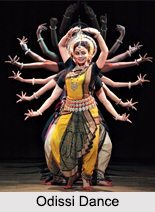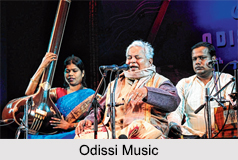 Performing arts of Odisha have undergone a long process of evolution and development. The term Performing Arts mainly encompasses three art forms of dance, music and drama. Odisha has seen a lot of ups and downs, sways and evolutions over the ages which have been of main significance in the history of the nation. The wonderful art notions on the temples and monuments, the beauties of the green valleys and hills and rivers and the Performing Arts of Odisha are certainly the state`s superiority.
Performing arts of Odisha have undergone a long process of evolution and development. The term Performing Arts mainly encompasses three art forms of dance, music and drama. Odisha has seen a lot of ups and downs, sways and evolutions over the ages which have been of main significance in the history of the nation. The wonderful art notions on the temples and monuments, the beauties of the green valleys and hills and rivers and the Performing Arts of Odisha are certainly the state`s superiority.
Different types of Performing Arts of Odisha
Odisha has a prosperous cultural and creative inheritance. Following are the different types of Performing Arts of Odisha:
Odissi Music: Odissi music is a separate structure of Indian classical music and is having all the necessary and budding features of Indian Classical form. Odisha music is charming, multi-coloured, spotted including various types. The existing musical tradition of Odisha can largely be grouped under five categories such as:

•Tribal Music: The tribal music signifies the tribals living mostly in the hilly and jungle regions and lightly in the coastal belt of Odisha. It is interesting to note that Odisha has the third largest attention of tribes constituting about one fourth of the total population. They are allocated over 62 tribal communities.
•Folk Music: Folk music is the expression of the culture and traditions of the folk communities. Of the bewildering diversity of folk music of Odisha, state may be made of Geeta, Balipuja Geeta, Kela Keluni Geeta, Dalkhai Geeta, Kendra Geeta, Jaiphula Geeta, Ghumura Geeta, Ghoda Nacha and Danda Nacha Geeta, Gopal Ugala and Osa-Parva-Geeta etc.
•Light Music: Bhajan, Janan, Oriya songs based on ragas, Rangila Chaupadi etc. are grouped under Light classical music, which forms an essential part of Odissi music. Sri Geetagovinda, Anirjukta Pravadha, Divya Manusi Prabandha, Chautisa, Chhanda, Chaupadi, Champu, Malasri, Sariman, Vyanjani, Chaturang, Tribhang, Kuduka Geeta, Laxana and Swaramalika are different sub-forms, which separately represent the traditional Odissi music.
Dance of Odhisha: Dance of Odhisha is principally famous and in itself displays the combination of many styles in history. Following are the different Dance of Odhisha:
Odissi Dance: Odissi dance is one of the eight classical dance forms of India. Odissi is the classical dance form that was initiated in the environment of the temples. It is a lyrical form of dance with its delicacy as its keynote. The verses used by the Odissi dancer for narration are tremendously metaphorical in content and suggestion.
Animal Mask Dance: Animal Mask Dances are common in village of south Odisha particularly in the district of Ganjam. It is performed particularly in Thankurani Yatra, when the idols are taken out on the streets, the animal mask dancers go dancing before the parade. The dancers go ahead the bridegroom`s procession to the bride`s house during the marriage ceremonies too.
Baunsa Rani Dance: Baunsa Rani means "The Bamboo Queen". Largely the little girls display a variety of acrobatic poses on the crossed bamboo bar and on the floor with beautiful bright movement synchronized with the beat of drums and songs.
Chhau Dance: It is a war dance. The steps and movements, the attack and defence, the performers, each holding a sword and shield, dividing themselves into two parties, the drums and their mode of play, the vast kettle drum identified as `Dhumusa` a must in the orchestra, its loud dominant beats energizing the dancers, all imply that Chhau dance is clearly originated from martial practices.
Gotipua Nritya Dance: It is dance which is performed by a single male dancer in woman`s costume. It is mainly from these male dancers that the present form of Odissi dance evolved.
Opera culture of Odisha
The people of Odisha depend upon stage show, staged by various groups in the event of festivals like Dussehra, Rasapurnima, Raja Parba and Dolapurnima. Stage shows are organized by some drama committees in rural areas. Galsagar is also organized for entertainment programme plots based on Hindu Mythology which forms stories for dharma.
Theatre culture of Odisha
Theatre in Odisha has an exclusive character which is not seen anywhere in India and professional stage shows ran full-house round the year. The Odissi theatre included of lots of range. The collection starts from puppetry like Kundhei Nata, Sakhi-kundhei Nata, Ravana Chhaya to balladry i.e. Daskathia, Pala, devotional ritual like Danda Nata, Bandi Nata, etc. It includes different types of Lila such as Yatra, Dhanu Yatra, Rahasa, Bharat Lila, mythical appearances such as Prahlada Nataka, Suanga, masked dance-drama. Processionals like Sahi Yatra dedicated to Rama, as well as Ramlila, are staged with much pomp and ceremony during Ram Navami.



















